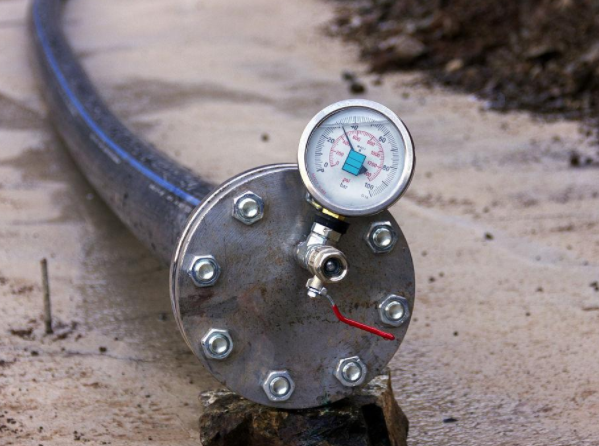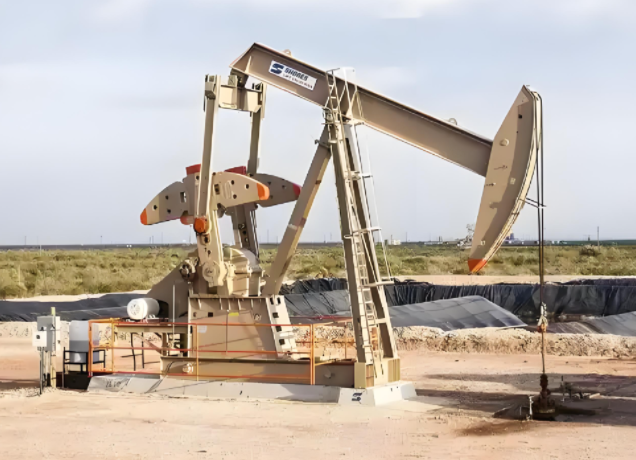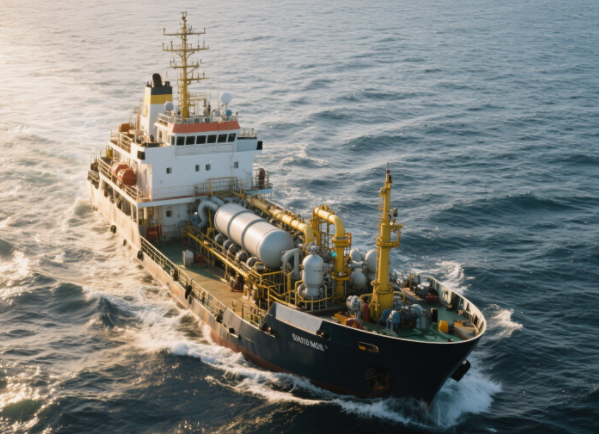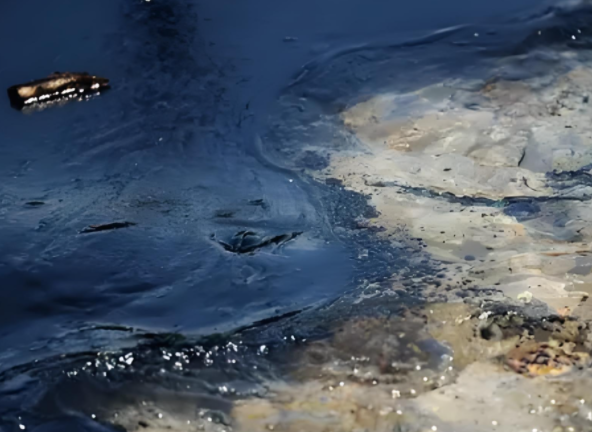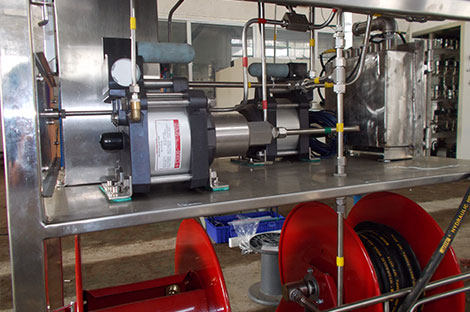Hydrogen Pipeline Materials: What You Need to Know
Following the rapid development of world hydrogen energy technology, hydrogen as a new, efficient, and clean energy is gradually being pushed towards commercialization. The widespread application of hydrogen relies heavily on secure and efficient modes of transport.
Among them, hydrogen pipeline transport is most commonly utilized, and the most important is the choice of materials. What are hydrogen pipeline materials? Which of them are safe as well as long-lasting? That is what this article will discuss in depth. Let’s begin!
Part 1. Why Are Hydrogen Pipeline Materials So Important?
Hydrogen is a gas with extremely small molecules, high diffusivity and leakage risk due to its small molecular sizes and diffusive nature.
Hydrogen can also cause embrittlement by diffusing into metal crystal lattices, causing catastrophic cracking or failure if stored for too long in its crystal lattices, causing embrittlement to set in and embrittlement to kick in, making selecting pipeline materials that are specifically designed for hydrogen transport particularly important.
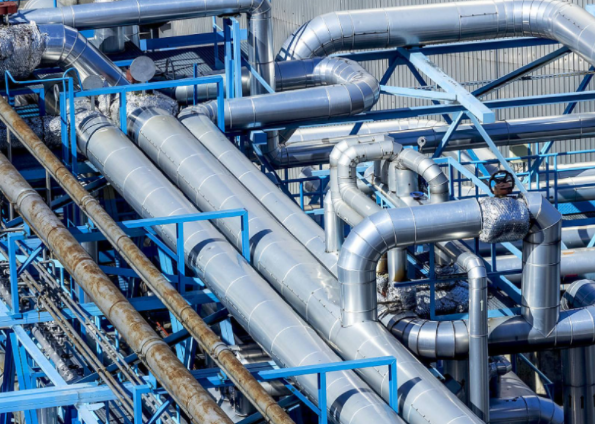
For safety, efficiency, and extended lifespan, the material of hydrogen pipelines must meet the following major requirements:
Superb Sealing Performance
Due to the extremely tiny molecule size of hydrogen, routine materials can allow hydrogen to pass through them over time. The perfect pipeline material must achieve outstanding sealing performance to prevent even miniscule leak, which can result in actual safety threats.
Resistance to Hydrogen Embrittlement
When hydrogen atoms diffuse through metals, especially under high pressure or cyclic loading, they can cause weakening of the material’s internal structure. This leads to crack formation, an effect known as hydrogen embrittlement. Therefore, materials must be properly selected and processed in order to be resistant to this type of degradation.
High Pressure Tolerance and Fatigue Strength
Hydrogen pipelines operate at fluctuating and at times higher pressure levels. Materials have to maintain mechanical strength under the long-term pressure cycles and resist fatigue and deformation for many years.
Corrosion Resistance
Long-term exposure to hydrogen, sometimes in combination with moisture, foreign particles, or fluctuating temperatures, can induce corrosion, embrittlement, or deterioration of the material. The most desirable material is one that remains stable and corrosion resistant during years of service.
If the wrong material is chosen, then not only is the pipeline life decreased, but also hydrogen leakage, system failure, or disastrous safety accidents. Material characteristics and compatibility with hydrogen must hence be properly evaluated in pipeline design and construction.
Part 2. Common Hydrogen Pipeline Materials
In the context of hydrogen energy application, directly choosing the types of pipeline materials considerably impacts the system’s safety, cost efficiency, and overall life span. The following paragraphs outline the most common and important grades of pipeline materials for hydrogen, including their benefits and drawbacks.
1. Stainless Steel
Typical Grades: 304L, 316L, 316Ti
Advantages:
High resistance to hydrogen embrittlement:
Low-carbon austenitic stainless steels, like 304L and 316L, exhibit significant resistance to hydrogen cracking and remain stable even in high-pressure hydrogen environments.
High corrosion resistance:
Stainless steels resist the corrosion of a wide variety of chemicals and attacks from the environment, as well as from water and contaminants which are usually present in hydrogen transport systems.
Good mechanical strength at high pressure:
Applicable to both medium and high-pressure hydrogen pipelines, hence suitable for refueling stations and industrial hydrogen distribution.
Disadvantages:
Greater cost than carbon steel:
Material and processing cost is relatively high, especially for more corrosion-resistant or stabilized materials like 316Ti.
Special welding procedure specifications:
Stainless steel welding entails controlled processes to prevent sensitization and stress corrosion cracking. Post-weld heat treatments may be necessary for some applications.
Common Applications:
Industrial hydrogen transport, high-pressure hydrogen refueling stations, chemical plants, and long-term hydrogen distribution networks.
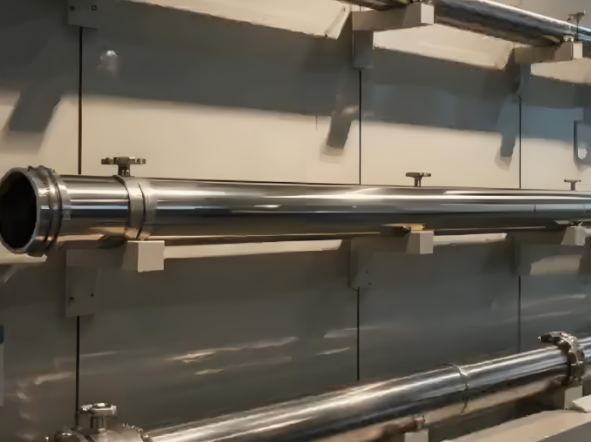
2. Carbon Steel
Typical Grades: ASTM A106, API 5L Grade B (with liners or internal coating)
Advantages:
Cost-effective option:
Carbon steel is easy to find and far cheaper than nickel alloys or stainless steel, which is attractive for massive projects with a limited budget.
Established processing technology:
Easy to weld, fabricate, and install using common industry practices. It’s widely established and has a long history of use in pipeline systems.
Disadvantages:
Prone to hydrogen embrittlement:
Carbon steel without liners or protective coatings deteriorates with age due to penetration of hydrogen atoms, especially under high pressure.
Requires internal surface treatment:
Typically needs to be plastic-coated, polymer-lined, or epoxy-painted to prevent corrosion and hydrogen permeation, especially for long-term service.
Common Applications:
Low-pressure pipes for hydrogen, short-distance transport, and cost-sensitive projects where protective coatings can be applied effectively.
3. Nickel Alloys
Typical Grades:Inconel 625, Hastelloy C-276, Monel
Advantages:
Superior hydrogen embrittlement and corrosive resistance:
Nickel alloys possess the best performance under extreme hydrogen conditions of use. They are mechanically stable even at high temperatures and pressures.
Good chemical stability:
Both immune to a wide range of acids, chlorides, and oxidizers and thus optimally suited for mixed gas carriage and aggressive industrial atmospheres.
Disadvantages:
Very high cost:
Nickel alloys are much more expensive than both stainless and carbon steel and thus are limited to specialty applications.
Difficult to machine and weld:
Require advanced tooling, specialized welding techniques, and expert technicians.
Common Applications:
Hydrogen pipelines for high-temperature reactors, aerospace fuel systems, research facilities, and chemical works handling mixed or hostile gases.
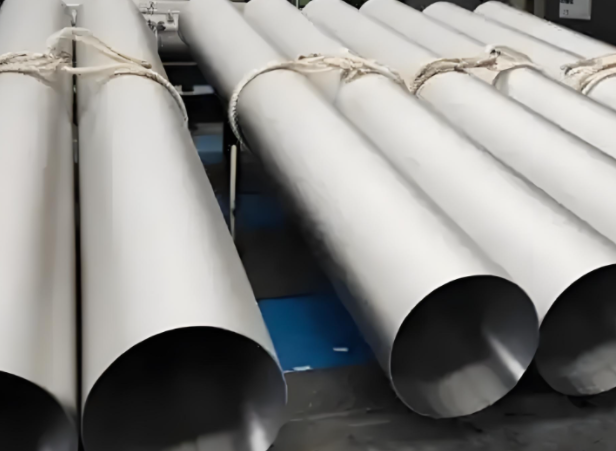
4. Polymers and Composite Materials
Typical Grades: High-Density Polyethylene (HDPE), Fiber-Reinforced Plastic (FRP), Thermoplastic Composite Pipe (TCP)
Advantages:
Lightweight and easy to install:
Polymer pipes are much lighter than their metal counterparts and can simply be installed without the requirement of heavy machinery, incurring less labor and logistics costs.
Economical with low-pressure systems:
Perfect for short-distance, low-pressure hydrogen supply such as household, lab, or backup fuel supply systems.
Disadvantages:
Limited mechanical strength:
These materials do not perform well under high pressure and are unsuitable for long-distance, high-volume hydrogen transport.
Risk of aging and leakage
Polymers can be prone to UV degradation, chemical aging, or cracking over time, leading to increased risk of hydrogen leakage.
Common Applications:
Microgrid distribution, small-scale fuel cell applications, backup facilities, and short-term deployments where high-pressure resistance is not required.
Summary Table
| Material Type | Hydrogen Embrittlement Resistance | Corrosion Resistance | Pressure Tolerance | Cost | Typical Application |
| Stainless Steel | ★★★★☆ | ★★★★★ | ★★★★☆ | ★★★★☆ | Industrial pipelines, H2 stations |
| Carbon Steel | ★★☆☆☆ | ★★☆☆☆ | ★★★☆☆ | ★★★☆☆ | Low-pressure, cost-sensitive projects |
| Nickel Alloys | ★★★★★ | ★★★★★ | ★★★★★ | ★☆☆☆☆ | Harsh environments, R&D |
| Polymer/Composites | ★☆☆☆☆ | ★★☆☆☆ | ★★☆☆☆ | ★★★★☆ | Small-scale, low-pressure use |
Part 3. Challenges in Hydrogen Pipeline Materials
Transporting hydrogen requires unique and rigorous material selection challenges beyond conventional mechanical needs. The small molecular weight of hydrogen, along with its high diffusivity and reactivity, necessitates specific criteria regarding the physical, chemical, and operational stresses the transporting pipeline materials undergo. The main challenges here are as follows:
1. Extreme Hydrogen Embrittlement Risk
The possible threat of hydrogen transportation via pipeline most certainly has to do with hydrogen embrittlement. Hydrogen embrittlement most often takes place when hydrogen molecules permeate and diffuse into the metal’s molecular crystal structure, and this is most likely to occur under high pressure or cyclic stress.
This leads to a tremendous loss of toughness and ductility, resulting in the material prone to spontaneous cracking or shattering — often with no apparent warnings.
- Typically affected materials: High-strength steels and selected alloys
- Stress conditions that facilitate embrittlement: High pressure, alternating stress, and low temperature
- Alleviation measures: Austenitic stainless steels or specially designed nickel alloys, and post-weld heat treatment
2. High Permeability of Hydrogen
Hydrogen gas molecules are extremely small, approximately 0.289 nanometers in diameter, and thus easily diffuse through a great deal of material, particularly polymers and some metals. Under high temperatures and pressures, this diffusion increases, leading to possible:
- Gas leakage through pipeline walls
- Reduction in material integrity over time
- Increased safety hazards, especially in enclosed or high-density conditions
As a measure against this, materials must be low hydrogen permeable, and multi-layer barrier structures or coatings can be employed in important systems.
3. Stringent Welding and Joint Integrity Specifications
Welding is a strong weak point in hydrogen pipeline systems. Poor welding technique can lead to micro-cracks, porosity, or zones of residual stress, which may be potential sources of embrittlement or leakage initiation.
Challenges include:
- Metallurgical compatibility assurance
- Avoidance of heat-affected zone (HAZ) degradation
- Consistent integrity of the seal under pressure
Recommended practices:
- Low-carbon filler material usage (e.g., 316L)
- Pre- and post-weld heat treatments
- Non-destructive testing (NDT) for flaw detection
- Adherence to hydrogen-specific welding codes
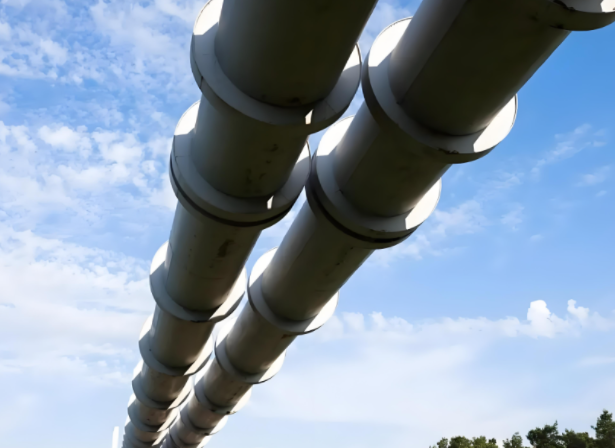
4. Lack of Global Standardization
In spite of international standards for hydrogen systems, such as:
- ASME B31.12 – Hydrogen Piping and Pipelines
- ISO 15156 – Materials for use in H2S-containing environments (relevant to hydrogen embrittlement)
- ISO/TR 15916 – Basic safety considerations for hydrogen systems
- …
There is still no universal conformity between countries, industries, and project types. Differences may exist in:
- Material qualification and testing requirements
- Pipeline design pressure requirements
- Safety margins and fatigue testing methodologies
- Welding procedure approvals
As a result, engineering teams must often adjust material choices and system design based on local codes, customer specifications, or service conditions — adding cost and complexity.
5. Long-Term Fatigue and Degradation
Hydrogen pipelines are typically designed for long-term operation for years or decades. Alternating pressurization-depressurization loading, environmental exposure, and chemical reactions may result in:
- Microstructural fatigue and crack growth
- Surface oxidation or stress corrosion
- Gradual mechanical property loss
Even very good materials initially can degrade over time unless properly maintained or inspected.
Part 4. How Wingoil Hydrogen Stainless Steel Pipeline Can Help?
Along with the accelerated growth of the hydrogen economy, pipeline shipping has emerged as a central component in hydrogen infrastructure. Wingoil stainless steel hydrogen pipeline is designed with high safety, good sealing, and long-term reliability, in accordance with global and domestic material standards. From long-distance hydrogen supply to short-distance distribution, our tubing products are custom-made to serve new hydrogen energy systems.

Key Features
- Size Range: 1/8″ to 2″ (3 mm to 25 mm)
- Form: Welded or seamless tubing
- Material Grades: 316/316L, 304/304L Austenitic Stainless Steel
- Product Type: High-pressure hydrogen tube / Instrument tube / General-purpose tubing
- Surface: Bright annealed, pickled, or polished finish
Products Benefits
- High resistance to hydrogen embrittlement
- Excellent corrosion resistance under aggressive conditions
- Good mechanical properties for high-pressure and cyclic loading
- Low hydrogen permeability, ensuring safety with continuous usage
- Supports low energy consumption and cost-effective transport
Why Choose Wingoil Hydrogen Pipeline?
- Totally in accordance with Chinese and international hydrogen pipeline standards
- Low-pressure distribution and high-pressure transmission uses planned for
- High weldability and surface finish, ideal for instrument piping
- Proven performance in hydrogen refueling stations, chemical plants, and power systems
- Backed by expert engineering support and material traceability
Conclusion: Choosing the Right Hydrogen Pipeline Material Is Critical to Project Success
The development of the hydrogen energy market presents new challenges and stimulating demands on materials science. Selecting a pipeline material that is hydrogen-resistant, pressure-resistant, and long-term durable is not only essential from a safety standpoint but also essential for sustainable growth in your company.
To learn more on materials for hydrogen pipelines or to obtain expert technical consultancy, don’t hesitate to get in touch with Wingoil. They are more than happy to provide you with expert consultancy and one-stop material supply.

